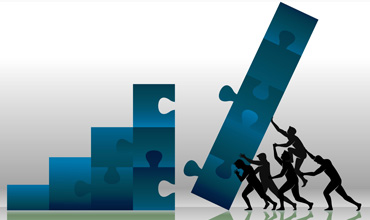Millennium Development Goals – A Progress Report on Nigeria

Abstract:
Millennium
Development Goals (MDGs) are 8 international goals that were officially
established following the millennium summit of the United Nations in 2000.
Using Nigeria as a case study, there has been massive strides in attaining
goals 1 to 6 while there has not been visible improvements in attaining goals 7
and 8. It is imperative for focus to shift to the rural areas where there is a
higher demand for provision of basic healthcare and environmental
infrastructure if these targets are to be met by 2015. Most importantly, the
issues of poverty, universal basic education and health, and provision of safe
drinking water will go a long way to improving the quality of life of over 160
million Nigerians.
References:
[1.] Abani, C.,
Igbuzor, O. and Moru, J. (2005),Attaining the Millennium Development
Goals in Nigeria: Indicative Progress and a Call for Action. In Moru, J.
(Ed), Another Nigeria is Possible: Proceedings of the First Nigeria Social
Forum. Abuja, Nigeria Social Forum.
[2.] Federal Ministry
of Agriculture and Rural Development (2012). Agricultural transformation
agenda: execution and delivery for 2012 by Honorable Minister of Agriculture
and Rural Development. Abuja: Federal Ministry of Agriculture and Rural
Development.
[3.] Federal Republic
of Nigeria (FRN) (2010),The MDGDRG funded Midwives Service Scheme: concept,
process and progress.
Abuja: National Primary Health Care Development Agency.
[4.] List of goals,
targets, and indicators. Available at http://siteresources.worldbank.org
[5.] National Agency
for the Control of HIV/AIDS (2011).Factsheet 2011: update on the
HIV/AIDS epidemic and response in Nigeria. Abuja: National Agency for the
Control of HIV/AIDS.
[6.] National Bureau
of Statistics (NBS) (2009). Profile of Women and Men in Nigeria.
Available at:
www.nigerianstat.gov.ng.
[7.] National Gender
Policy (2008).
Retrieved from
http://nascp.gov.ng/demo/wpcontent/uploads/2014/02/National-Gender-Policy-Strategic-Framework-2008-MWASD.pdf
[8.] National
Population Commission (NPC), National Malaria Control Programme (NMCP) and ICF
International (2012)Nigeria Malaria Indicator Survey (2010). Abuja: NPC,
NMCP and IF International
[9.] Nigeria MDG
Report (2010).
Available at
http://www.mdgs.gov.ng/index.php/downloads/category/1-mdgs-general#
[10.] Nigeria meets
MDG 1 (n.d).
Available at
http://www.fao.org/countryprofiles/newsarticle/en/c/202569/
[11.] Obaji, C.N.
(2005).Nigeria's
experience with girls' education and linkages with action with adult female
literacy to impact on poverty alleviation. Paper presented at the United
Nations girls' education initiative, technical consultation, Beijing, China,
26–27 November. Available at:
http://www.ungei.org/beijing/nigeria
_opening.html.
[12.] OSSAP-MDGs
(2010).Nigeria
Millennium Development Goals (MDGs) countdown strategy2010 to 2015: achieving
the MDGs.
Abuja: OSSAPMDGs.
[13.] UNDP Nigeria MDG
Report (2013). Retrieved
from
http://www.ng.undp.org/content/dam/nigeria/docs/MDGs/UNDP_NG_MDGsReport2013.pdf

